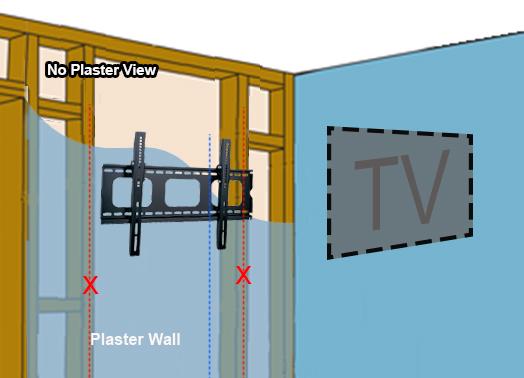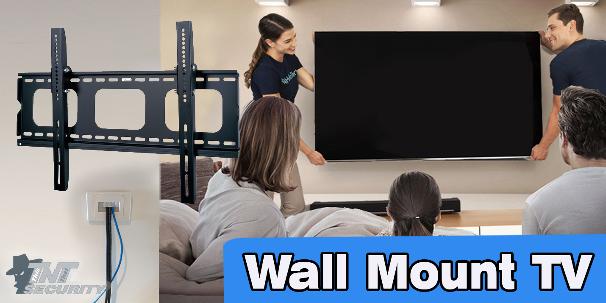
How does it work?
To hang the TV is just one part of the job.
Once that's done, then what about the cable left visible below the TV?
Most of our customers opt to have the cable hidden within the wall cavity leaving the entertainment area clear of cable-clutter.
To do this requires passing the cable into the wall (usually somewhere behind the TV) and have it exit out at another point where the device connections are close (often below the TV). This is done by making a couple of small holes which we replace with brush-plates to keep it looking professional and tidy.
In the images provided on this page you can see that the plan is to have the cable enter through the top plate (6) and exit at the bottom via the bottom plate (6). Whether or not this is possible will usually come down to whether or not there is an obstruction in the wall. Obstructions will usually be other electrical cable, insulation OR a noggin (1.)
Behind the wall...
Most times it will be straight forward to hang the TV and hide the cables without much trouble, making the work quick and neat.
However this isn't always the case and the following scenarios may help you understand what is needed for your installation...
No obstruction
In the image above the cable is dropped from entry to exit holes without any issue as there are no obstructions in the wall. Even though there is no noggin (as in the next image) there still might be insulation in the wall and this will make it tricky but usually not a problem.
Obstruction
Here you can see that there is a noggin (circled red) that can be a problem.
What to do to get around this?
1. Move the exit hole (lower 6.) higher so that cables exit above the noggin/obstruction.
2. Drill from top (inside the roof) down through all noggins to make a path for the bulk to fit through. This is the more difficult option and would attract additional charges but it would ensure you get the result you want.
3. Cut out a hole where the obstruction is to make room for the cables to pass that area and then patch up and paint. This would take a 2nd and possibly a 3rd visit and is more costly.
4. For a lesser additional charge we are able to use cable duct designed for internal use to hide the cable. Charged per metre it would hide all the messy cable but would still be visible. It can be painted to match the wall and minimize the visibility that way.
Studs for Strength:
When hanging a TV to a plaster wall / drywall its ideal to fasten at least one side of the TV bracket to a stud (behind the plaster). If this is not possible then there are plaster anchor points that can be used to provide a strong support point for the bracket and securely hang your TV that way.
First thing to look for is a strong drill point to be able to secure the TV bracket to the wall. Timber Studs in the wall will make the preferred anchor point for the bracket and hopefully it also aligns with your preference for the location of the TV.
If the stud is not in the right position then it may require some compromise on your part with the preference for the position of the TV. Eg. if the wall studs are spread too far apart then you will have to decide on one of a few options:
1. Move the preferred location of the TV to the left or right of the original position so that the TV bracket can be fixed securely to at least one Timber Stud (two studs are preferable but one is sufficient with most TV's and we would then use plaster anchors for the other side).
2. Keep the TV in the same position and ignore the studs altogether. In this case we would use several plugs (expanding wall anchors or similar - depending on the TV weight) to secure the bracket before hanging the TV.
3. Consider alternatives that may include strengthening the wall's ability to hold the weight of the TV bracket and TV. This may be as simple as placing a hang rail from one stud to the other before fastening the the bracket, or as involved as cutting out the plaster large enough to insert additional timber behind the plaster to be used as the fastening point - this would then require patching up and repainting and would therefore require a return visit.









